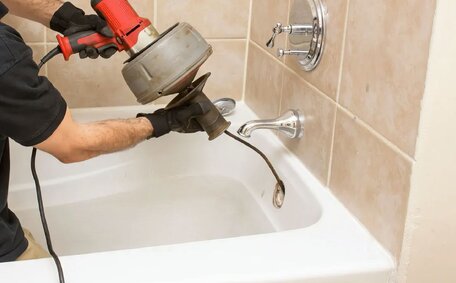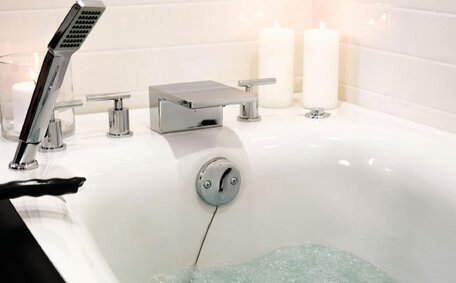Understanding Mould Growth in Your Home
Excess moisture, particularly in dark and poorly ventilated spaces, is the primary cause of mould growth in homes.
Mould risk in your home surfaces within 24 to 48 hours following water exposure. It’s essential to know how to respond when black or green mould spots appear, typically 18 to 21 days after initial exposure.
A single mould spore demonstrates the organism’s affinity for wet areas, as it thrives in high-moisture environments. Leaking pipes, flooding, condensation, and high humidity are common culprits that cause mould growth.
Molds grow on various surfaces, including plant and animal matter, rapidly expanding across walls and ceilings in their quest for a food source. Effective mould prevention hinges on proper moisture control, air circulation, dehumidifier use, and prompt leak repairs.
The varied health effects of mould exposure underscore the importance of determining appropriate removal strategies. Immediate mould combat measures help prevent health complications and contribute to a healthy home atmosphere.
Identifying the Source of Water Leaks
Swift identification and repair of water leaks are crucial to prevent mould growth. Especially after flooding, inspect pipes beneath sinks and appliances for any signs of drips or rust that could encourage mould proliferation. After substantial rainfall, meticulously inspect ceilings, walls, and bathroom pipes for signs which can indicate water or potential water intrusion.
Wallpaper bubbles or mould indicate water within walls. Thoroughly check your basement and bathroom for moisture signs indicating the presence of mould, focusing on areas near showers, tubs, and water fixtures.
Persistent dampness, condensation mould, and musty smells suggest conditions conducive to mould growth inside your living spaces. Employ moisture meters to scrutinize areas that can hold excess dampness. Gutters, flashing, siding, and the foundations of your building should be inspected after heavy storms.
Unchecked moisture following water damage facilitates conditions for swift mould grow, and to learn how to prevent mold after water incidents, timely intervention by professionals such as Marrickville Plumbing is advocated.
Health Risks of Mould Exposure
Grasping how indoor exposure to mold can affect the humidity your home can help raise awareness of a potential mold problem and its health implications is vital. Headaches, fatigue, rashes, asthma attacks, and respiratory health problems are common symptoms. Extended exposure could escalate to chronic respiratory afflictions due to inhalation of mould spores causing health complications.
Some dangerous mould type fungi impact environmental health significantly, like black mould, which releases toxins that severely irritate eyes, skin, and nasal passages.
Exposure to mould poses a risk across the board, which can lead to heightened susceptibility in people like youngsters, the elderly, expectant mothers, and those with weakened immunity. How does mould, even in the smallest damp spaces, can trigger allergic reactions, transcending mere nuisance, especially if a sensitivity exists. It is crucial to address mould promptly before extensive colonies form and release mold spores into living spaces.
Regulating indoor air cleanliness and promptly rectifying leaks are necessary actions to diminish the risk posed by mould, which grows best in damp environments. If mould in your rental property spirals out of control, seek expert mould analysis or help. Allowing mould colonies to grow puts your family’s health at risk.
Step-by-Step Mould Remediation
Adhering to these guidelines on how to prevent mold will secure effective DIY removal of mould:
- To tackle mould removal efficiently, equip yourself with gloves, goggles, masks, and coveralls where possible.
- Isolate the impacting zone with plastic sheeting around vents to curtail the spread mould.
- Use natural ingredients like tea tree oil to prepare a mould removal solution, but never combine bleach with other cleaning agents to ensure safety.
- Remove mould from resilient home materials like ceramic and glass with a suitable cleaner, followed by a thorough rinse with clean water.
- Ensure the affected area is completely dry for at least two days before starting sealing and repair work to create an environment resistant to mould.
- Use an effective mould remover on non-porous surfaces and get rid of any porous materials by carefully bagging and discarding them, questioning 'how do I determine if this item is compromised by mold?' when considering items like drywall or insulation.
- Consistently inspect the area for any mould growing your home, questioning 'how do I maintain long-term mold prevention?' to address ongoing moisture challenges.
For extensive mould infestations beyond DIY control, professional service and product treatment are crucial. Find out more about professional mould testing or product treatment beyond DIY capabilities by contacting your local specialists at Marrickville Plumbing through the details on our site.
Preventing Future Water Leaks and Mould Growth
Consistent vigilance is needed to prevent water breaches and subsequent mould problems arising from poor moisture management. Avert mould issues by rapidly fixing leaks, using dehumidifiers to tackle humidity levels in your home, ensuring readings stay ideally below 50%. Improve ventilation by operating bathroom and kitchen exhaust fans so air home displaces moist air, installing humidity-controlled exhaust fans, and opening windows when feasible.
Regularly check all water fixtures, pipes, and appliances for leaks to promote air circulation and protect against wall and ceiling mould. Check ceilings, walls, and foundations for moisture, leaks, or mould, particularly after heavy rain. Monitor areas like the cold surface of walls prone to water vapour and damp mould, and insulate cooling ducts and pipes to minimise potential moisture.
Before starting repairs, confirm that humid construction materials like timber and plasterboard have been cleaned and dried for over 10 hours to diminish the risk of moisture-induced mould growth.
Give priority to repairs that prevent water intrusion into your home. Grade the land away from your property to effectively channel water runoff.
Arrange for professional mould remediation testing if you suspect concealed growth. Remediate any growth discovered during inspections or renovations. Diligent moisture control and fast leak repairs avert hazardous infestations in conditions conducive to mould growth.
Maintaining a Mould-Free Home
Safeguarding your well-being involves taking action to prevent mould growing through smart moisture management to maintain healthy indoor air conditions. Fix leaks immediately, improve airflow by resolving to open windows often, use exhaust fans when cooking or showering, and manage dehumidifiers to keep indoor humidity under 50%.
Periodically inspect all water fixtures, pipelines, walls, and ceilings to reduce mould, especially when leakage or moisture is evident. In the aftermath of heavy rains or storms, it’s equally important to survey the areas outside your home, such as roofs, gutters, and foundations. Address any moisture concerns as soon possible to preclude mould growth.
Clean up and dry out any wet building materials thoroughly to ensure that air can freely circulate, preventing mould accumulation. Prioritise repairs that prevent water from intruding into your home. Enhance outflow surrounding your home’s perimeter to ensure rainwater is diverted, maintaining dry air around the base.
Pull back curtains to let in sunlight and air circulation – an effective strategy against mould escalation. Shift furnishings apart from doors and windows ensuring there are no exterior barriers that can cause mold your property, cool enough to promote moisture buildup.
Sunlight inhibits mould growth. Insulate pipes and ductwork appropriately as well.
Reduce indoor plants and position them to enhance air circulation. Use air conditioners with moisture control or dehumidifiers during periods of high humidity.
Perform yearly inspections to detect moisture problems before mould can form. Remediate any mould discovered during renovations or repairs immediately. Maintaining proper moisture and air quality controls will help keep your family’s health secure by preventing hazardous mould infestations.
Consult licensed mould specialists, endorsed by the department of health, through Marrickville Plumbing for precise removal methods and treatment processes to protect your family’s wellbeing.






